The Massacre at Kent State University
Rarely-seen alternate angles of one of the most iconic photos in history.
Bullets were whizzing over John Filo’s head during his lunch break from the student photo lab at Kent State University on May 4, 1970. He dropped his camera and stood motionless as National Guard troops suddenly opened fire on students protesting the Vietnam War.
Thirteen seconds and sixty-seven shots later, four students were dead and nine wounded.
“Was I shot?” Filo wondered.1
He lifted his camera, a borrowed Nikkormat, as fourteen-year-old Mary Ann Vecchio approached the lifeless body of Jeffrey Miller. She can be seen running into the frame on the far right of this photo taken by Filo.
Filo was nearing the end of his roll of bulk-loaded Tri-X when he saw Vecchio fall to her knees next to Miller. “I could see something building in her, and all of a sudden she lets out this scream,” Filo recalled. “I shoot one more picture, and I’m out of film.”2
After taking photos, angry student protestors confronted Filo, demanding to know why he was taking pictures, screaming, “What kind of a pig are you?”3 Filo snapped back, “No one's going to believe this happened,” then pointed to his camera. “This is proof.”4
Fearing his film would be confiscated by the military, he hid it under the hood (or was it in the hubcap?) of his red Volkswagen Beetle and drove to The Valley Daily News in Tarentum, Pennsylvania, to process and transmit to the Associated Press.
Filo’s instantly-iconic photo was published all over the world the following day and was later awarded the Pulitzer Prize in Spot News Photography.
Newsweek published a heavily-treated version of Filo’s photo on its cover. Bold, but the silo and heavy treatment were unnecessary.
Sometimes referred to as the Kent State Pietà, Filo's photo became the definitive image of the Vietnam-era protest movement and was inspiration for the song Ohio, the counterculture anthem by Crosby, Stills, Nash & Young.
Filo’s Pulitzer Prize-winning photo was also one of the most infamously doctored news images in history. It’s obvious when you see the altered version layered on top of the original. The fence post…
It’s a long-held mystery exactly who did this and how it happened, but some answers can be found on the BACK of this print in the archives of the International Center of Photography.
This is the history of this print, its provenance — when and where it was published. Take a close look at these two appearances of the photo in TIME. The original, unaltered photo was published January 4, 1971…
But in the November 6, 1972, edition, the photo was altered.
So, sometime between January 4, 1971, and November 6, 1972, the fence post was removed. The manipulated version slipped past TIME’s editors, and as a result, every publication that used this particular print after November 6, 1972 unknowingly published the altered, fence post-less version.
John Filo wasn’t the only Kent State student to document this tragic scene. An editor from LIFE cold-called the student newspaper office and asked for someone to cover the protests — Howard Ruffner, Filo’s roommate, jumped at the chance.
“Would you mind taking some pictures for us today if anything happens on campus?” the Chicago-based LIFE editor asked.5
Ruffner delivered. This is one of many powerful photos he made that day, taken a split-second later than Filo’s.
Filo may have won the Pulitzer, but Ruffner scored the cover of LIFE. An interesting side note: Filo's iconic photo wouldn't have been possible without Ruffner, who loaned him a longer lens (a Nikkor 43-86mm f/3.5).
Another journalism student, Jerome Stoklas, was photographing from the rooftop of a nearby building. The long, dark pool of blood is an unsettling detail.
And then there's this incredible angle that I discovered in the May 4 Collection at Kent State University by Ronald McNees, taken from the opposite side of Filo. This is the horror that fourteen-year-old Mary Ann Vecchio was reacting to when she knelt next to Jeffrey Miller.
This rarely-seen, never-before-published photo by McNees also reveals a new detail — a clenched fist on the back of Vecchio's red t-shirt (“SLAVE” is written on the front).
A closer look at McNees’ contact sheet, also part of the May 4 Collection, shows a succession of intriguing images.
The second frame is a protestor holding a black flag, jumping up and down on the pool of blood left by Miller’s body. The third and fourth images are of other victims and the fifth is a student pointing to a bullet hole left in a sculpture (Solar Totem #1 by Don Drumm).
A photo from a similar angle, taken by Mike Estell, was published in TIME, but was severely cropped, losing much of its impact.
Surprisingly, TIME did not publish John Filo’s photo of Mary Ann Vecchio.
Other photos taken by Kent State journalism students on May 4 are equally outstanding and worth revisiting. John Darnell is one of the few photographers to capture the exact moment National Guard troops opened fire.
After the shooting, Darnell knew he had documented something historic and feared that his film would be confiscated, so he rewound the roll in his Neoca 2s rangefinder and hid it down his pants. “I had put a blank roll in the camera,” Darnell told the Cleveland Scene. “In my ass were two good rolls.”
LIFE paid Darnell $8,000 for the photo (roughly $65k today).6
Kent State senior Paul Tople was photographing near Darnell when the shooting started, but further away from the National Guard so he was able to capture the crowd scrambling. The layered chaos is palpable.
Tople worked weekends at the Akron Beacon Journal and was part of the team that won the Pulitzer Prize for Spot News Reporting for their coverage of the Kent State tragedy. He remained at the newspaper for forty-two years until his retirement in 2013.
Only a handful of color images exist from the Kent State protests, but they’re remarkable. This sweet, yet darkly foreboding photo was taken the day before the massacre by Kent State senior James Coon.
Coon photographed the fresh-faced soldier flashing a peace sign with a flower in the barrel of his gun, just before it was removed by an officer. A student named Allison Krauss snatched the flower from the officer and said, “Flowers are better than bullets!”7
Allison Krauss was one of the four Kent State students killed the following day.
Coon’s photo harkens back to Bernie Boston’s miraculous Flower Power, taken October 21, 1967, at a Vietnam War protest at the Pentagon.
Boston’s editors at The Washington Evening Star “didn’t see the importance of the picture” and refused to publish the image, which later was a runner-up for the Pulitzer Prize (Boston entered it on his own).8
Until I saw this newsreel clip of the moment, I wasn’t aware that the soldier at the top of Boston’s frame was pulling the flower out of the rifle…
…just like the officer did to the National Guard soldier at Kent State in Coon’s photo.
There’s another photo I found in the May 4 Collection, that’s profound in its simplicity. Ralph Solonitz was a Fine Arts major at Kent State and made this photo later in the day on May 4. This is the spot where Jeffrey Miller died, the same spot John Filo made his iconic photo.
It’s as opposite of Filo’s iconic photo as can be — it’s quiet, subtle, eerily artful.
Solonitz never got the girl’s name. “I walked around the parking lot snapping photos for about 45 minutes,” Solonitz told me. “She was still standing over Jeffrey Miller’s drying blood.”
John Filo, “Photographer John Filo discusses his famous Kent State photograph and the events of May 4, 1970,” CNN (May 4, 2000).
Patricia McCormick, “The Girl in the Kent State Photo,” The Washington Post (April 19, 2021).
Sam Roe, “Thirteen Seconds. Dozens of Bullets. One Explosive Photo,” Columbia Journalism Review (June 1, 2016).
Patricia McCormick, “The Girl in the Kent State Photo,” The Washington Post (April 19, 2021).
Howard Ruffner, interview by Kathleen Siebert Medicus, recorded September 20, 2019, transcribed by the Kent State University Research & Evaluation Bureau.
Andrew Putz, “The Shootings: The Art of Violence,” Cleveland Scene (May 4, 2000).
Paula Schleis, “She told guardsmen at Kent State ‘Flowers are better than bullets!’ Then a bullet killed her.” The Cincinnati Enquirer (May. 1, 2020).
Jocelyn Y. Stewart, “Photographer Chronicled A Tumultuous Era,” The Los Angeles Times (January 24, 2008).


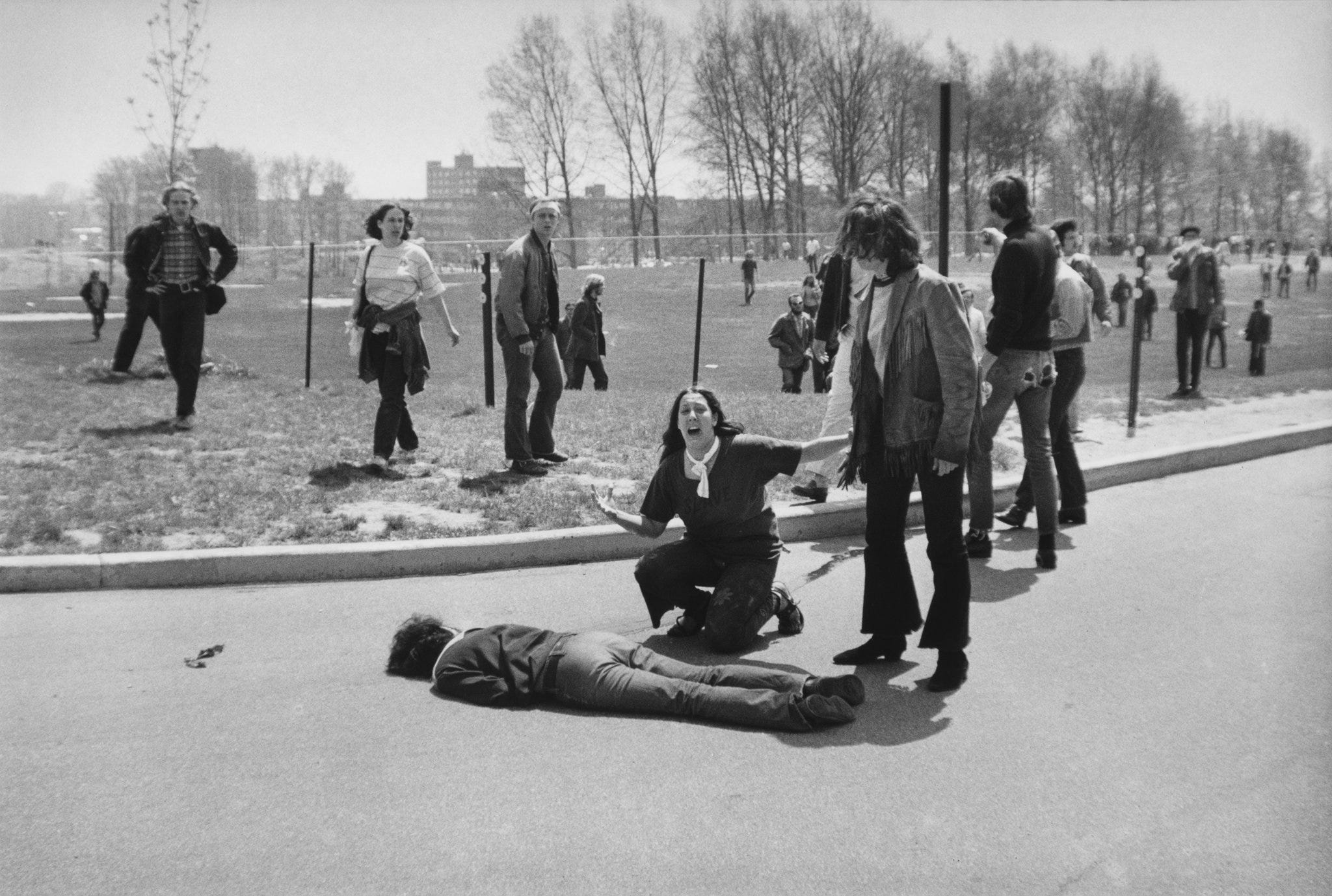
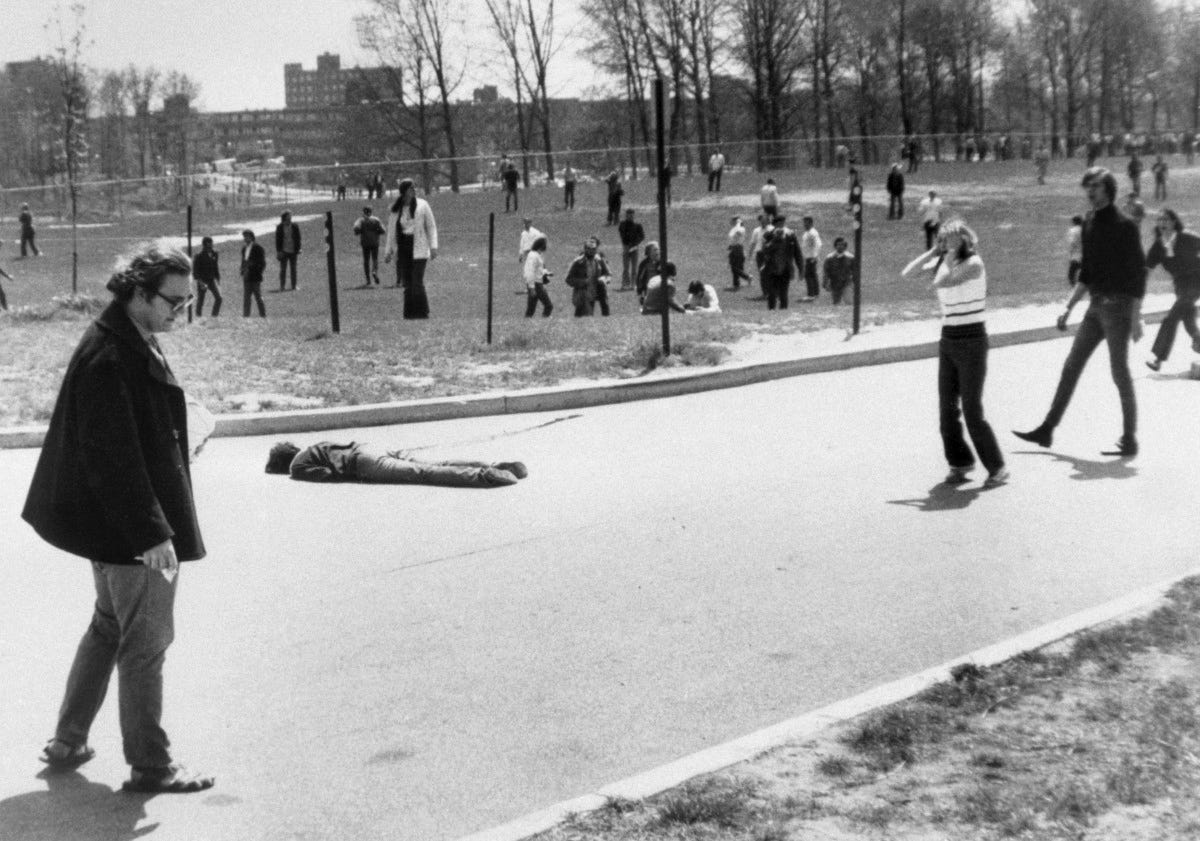

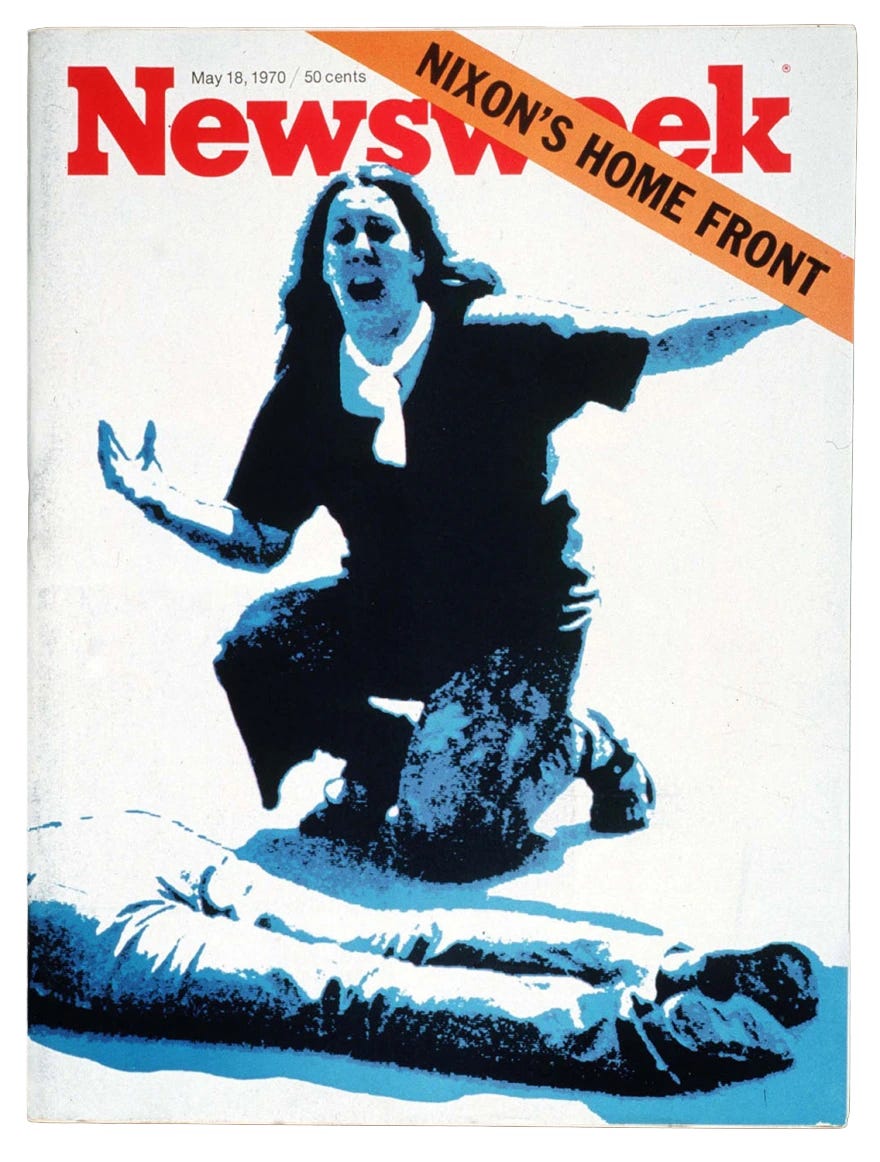

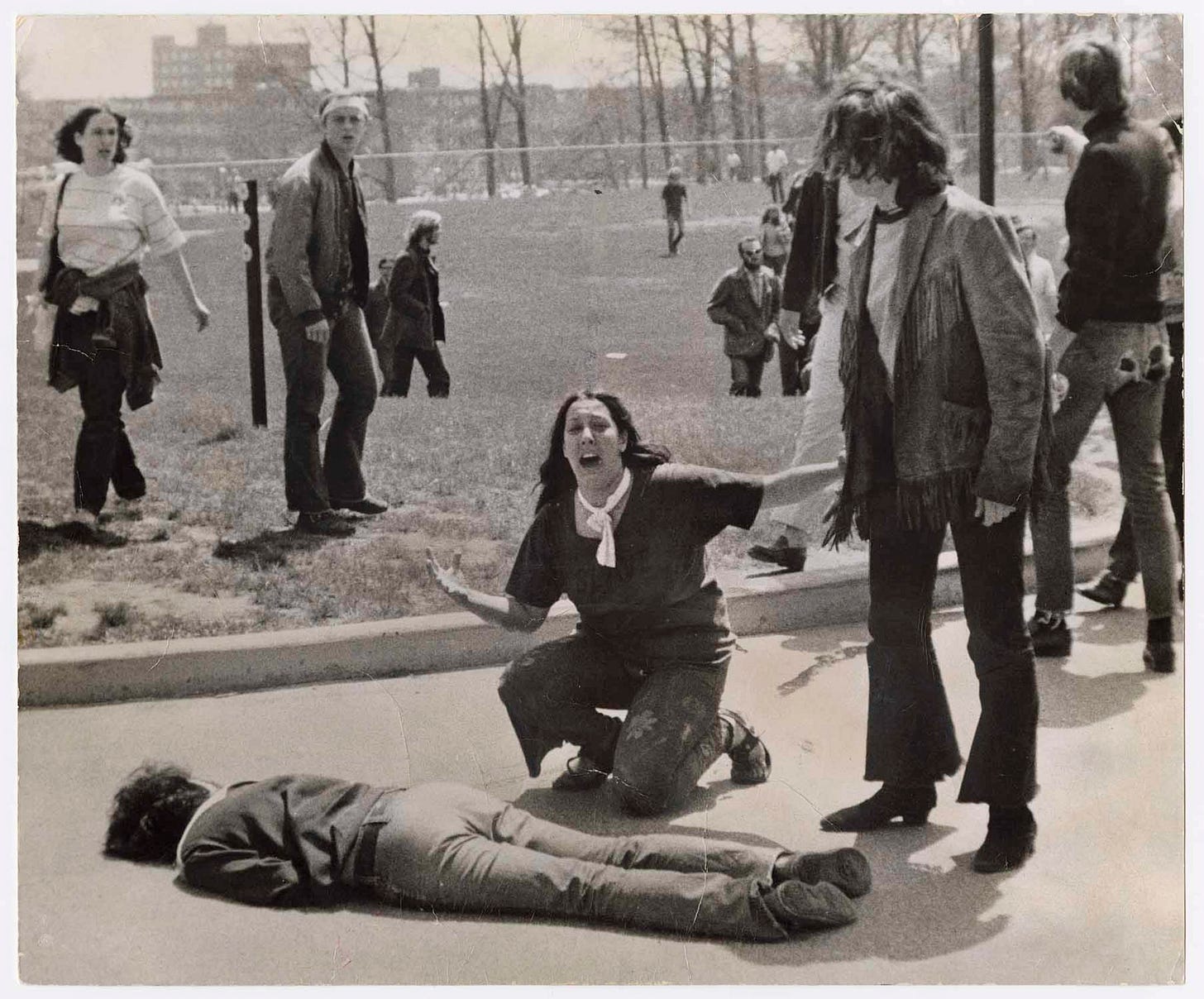
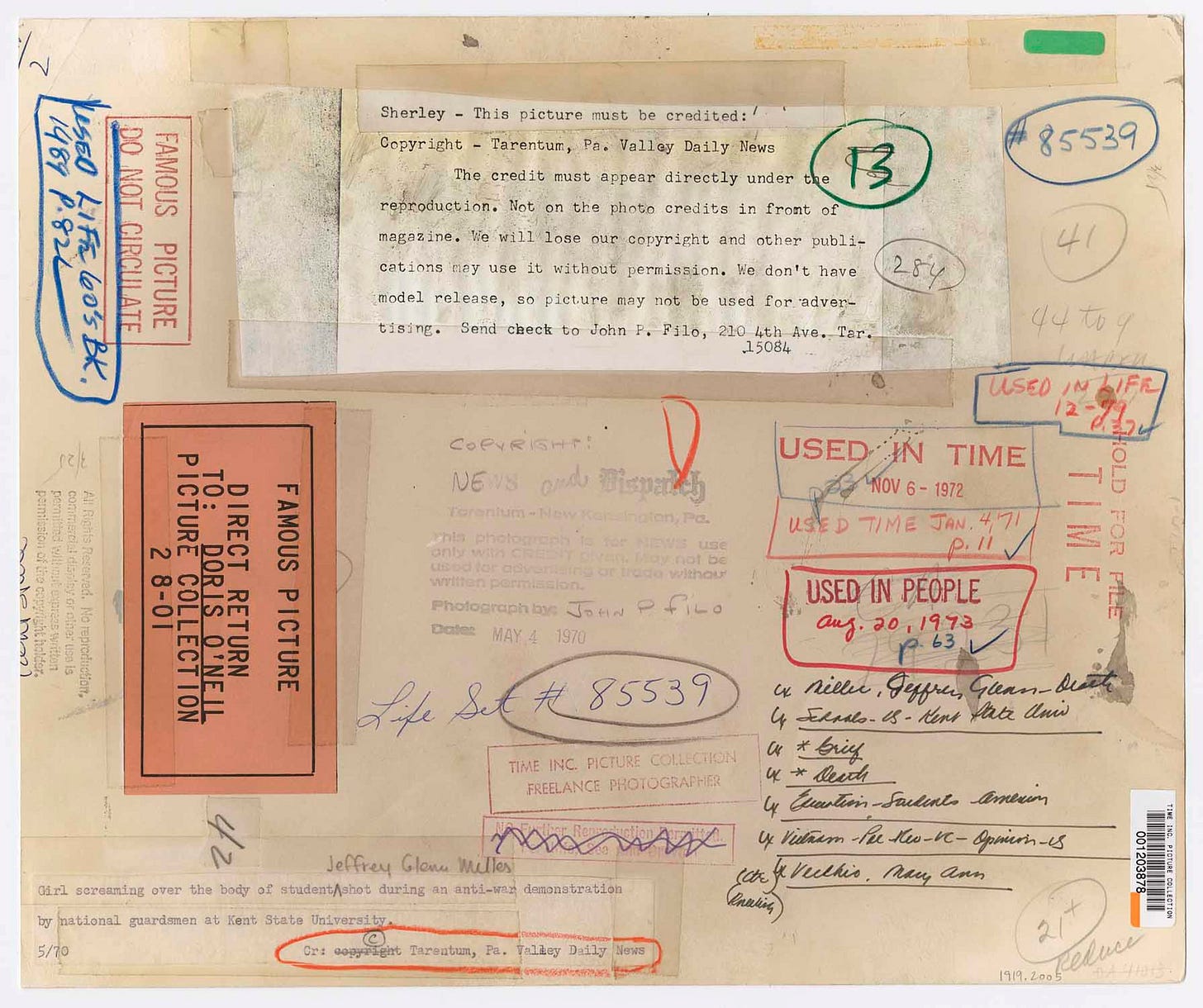
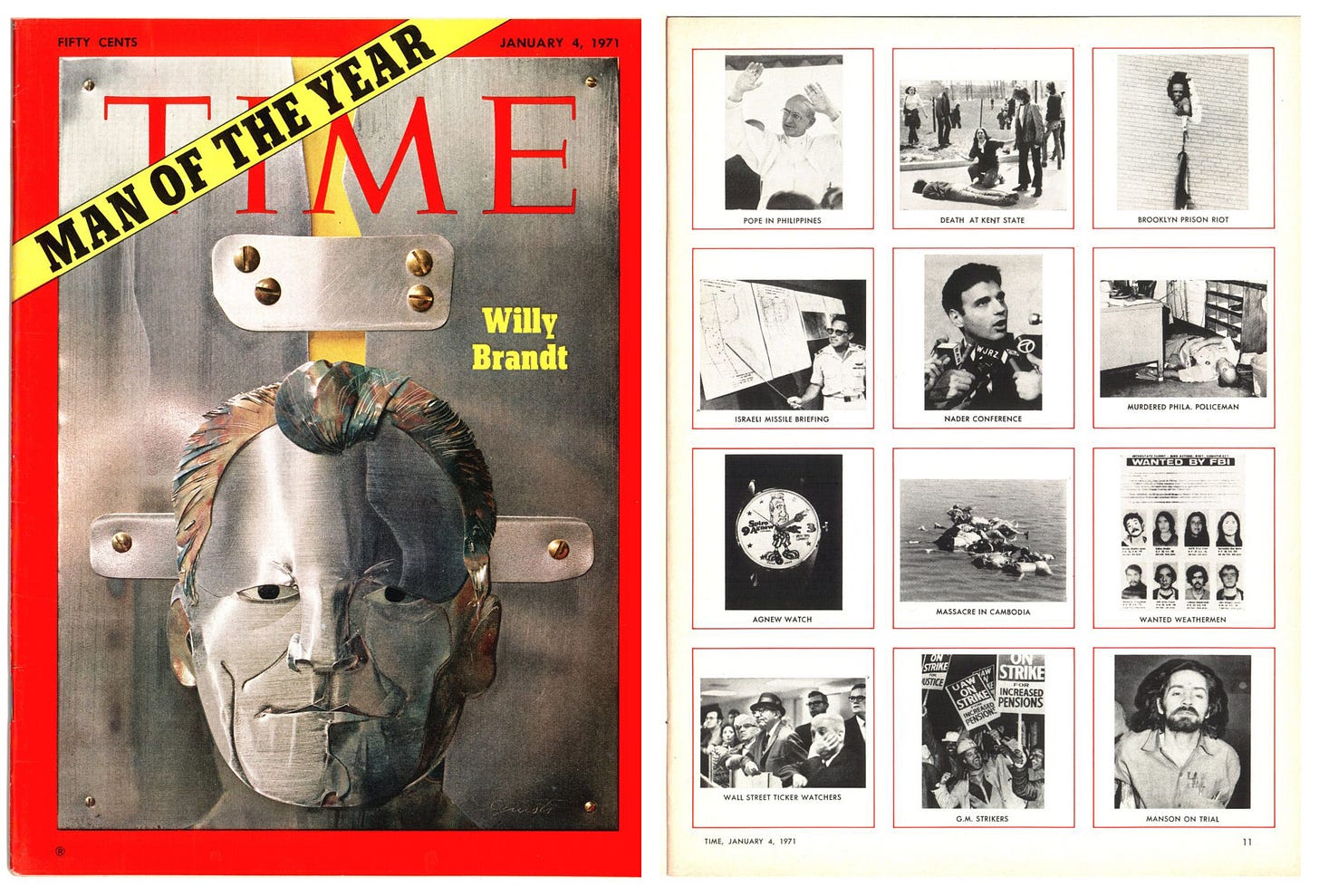
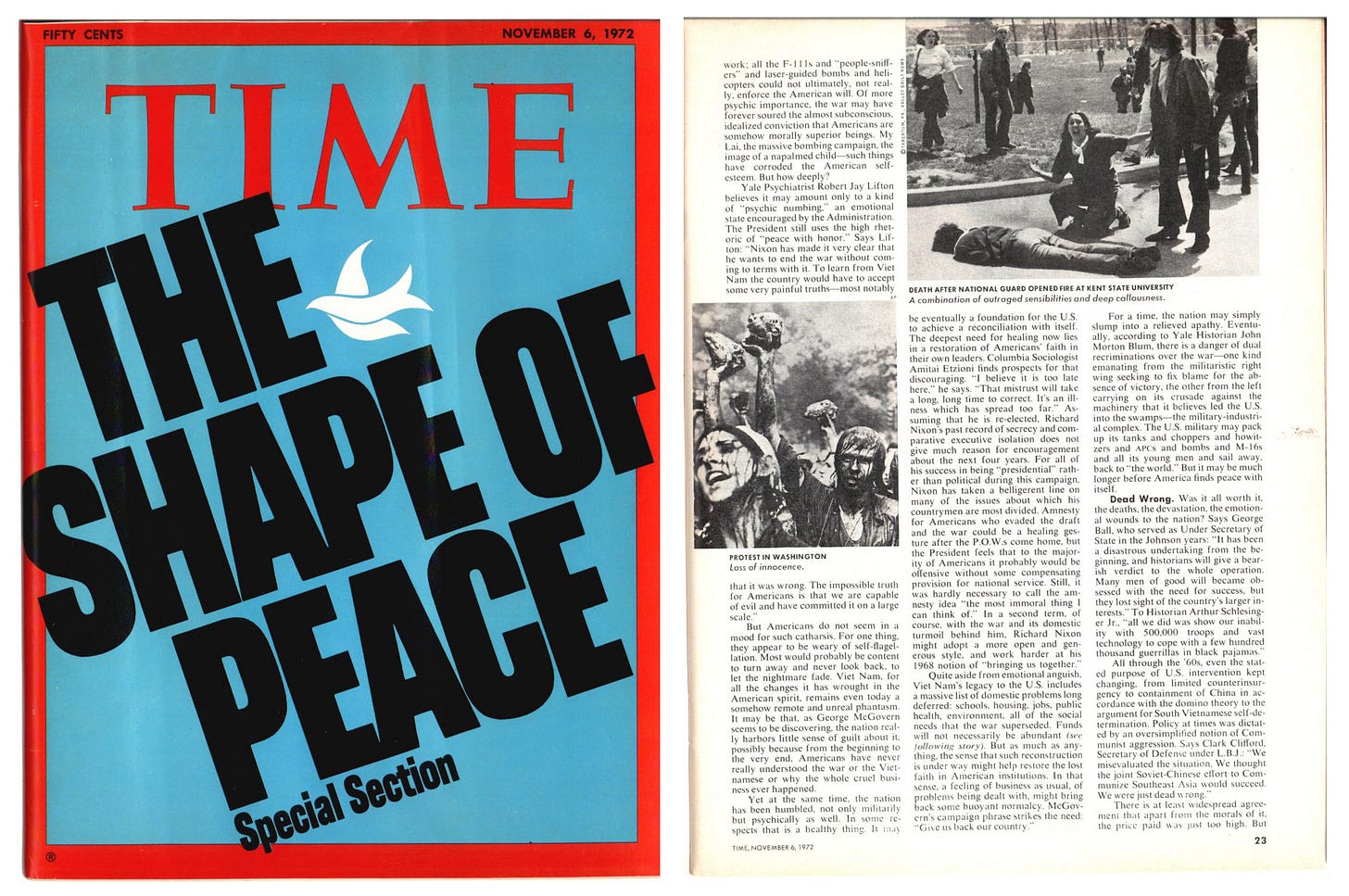
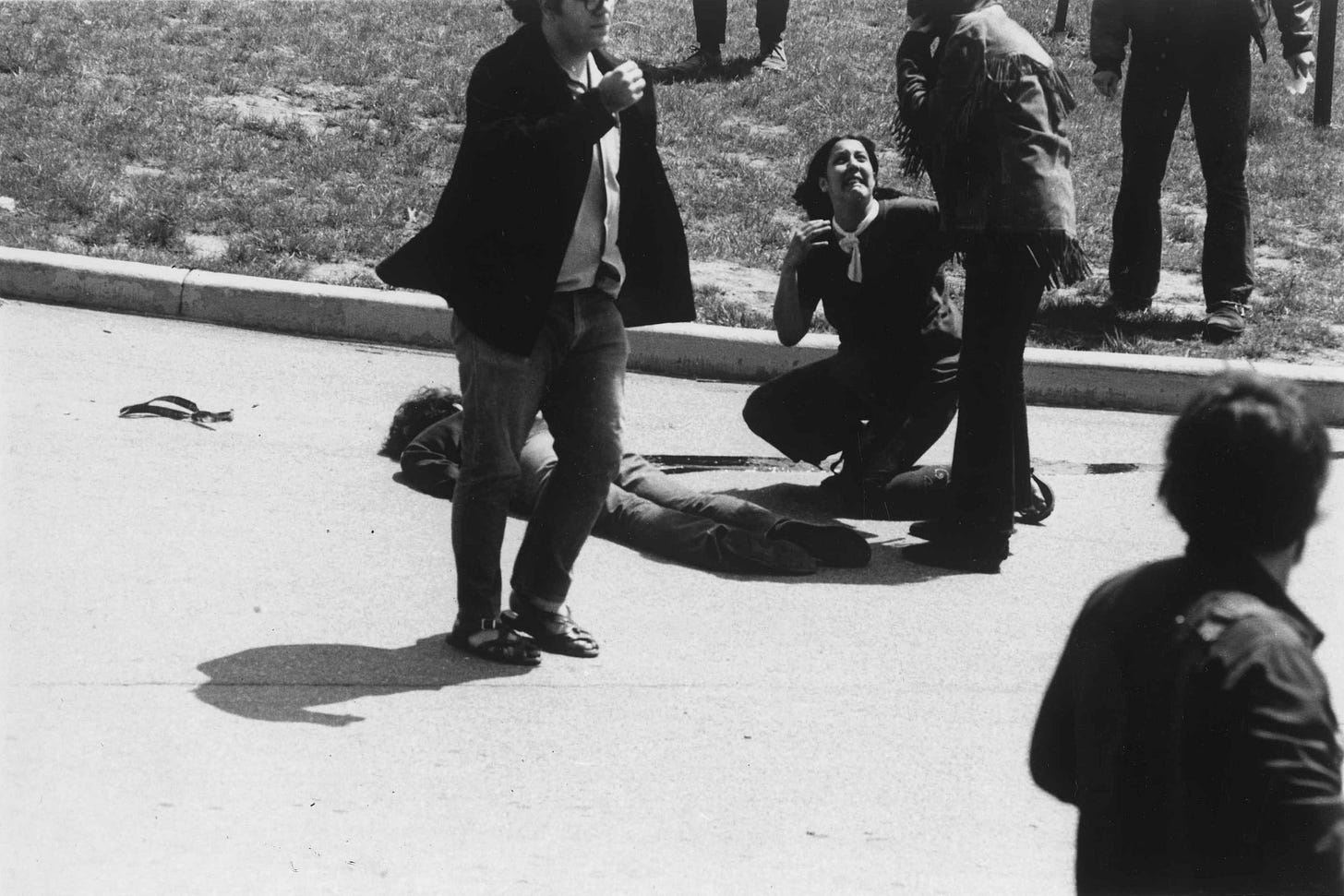
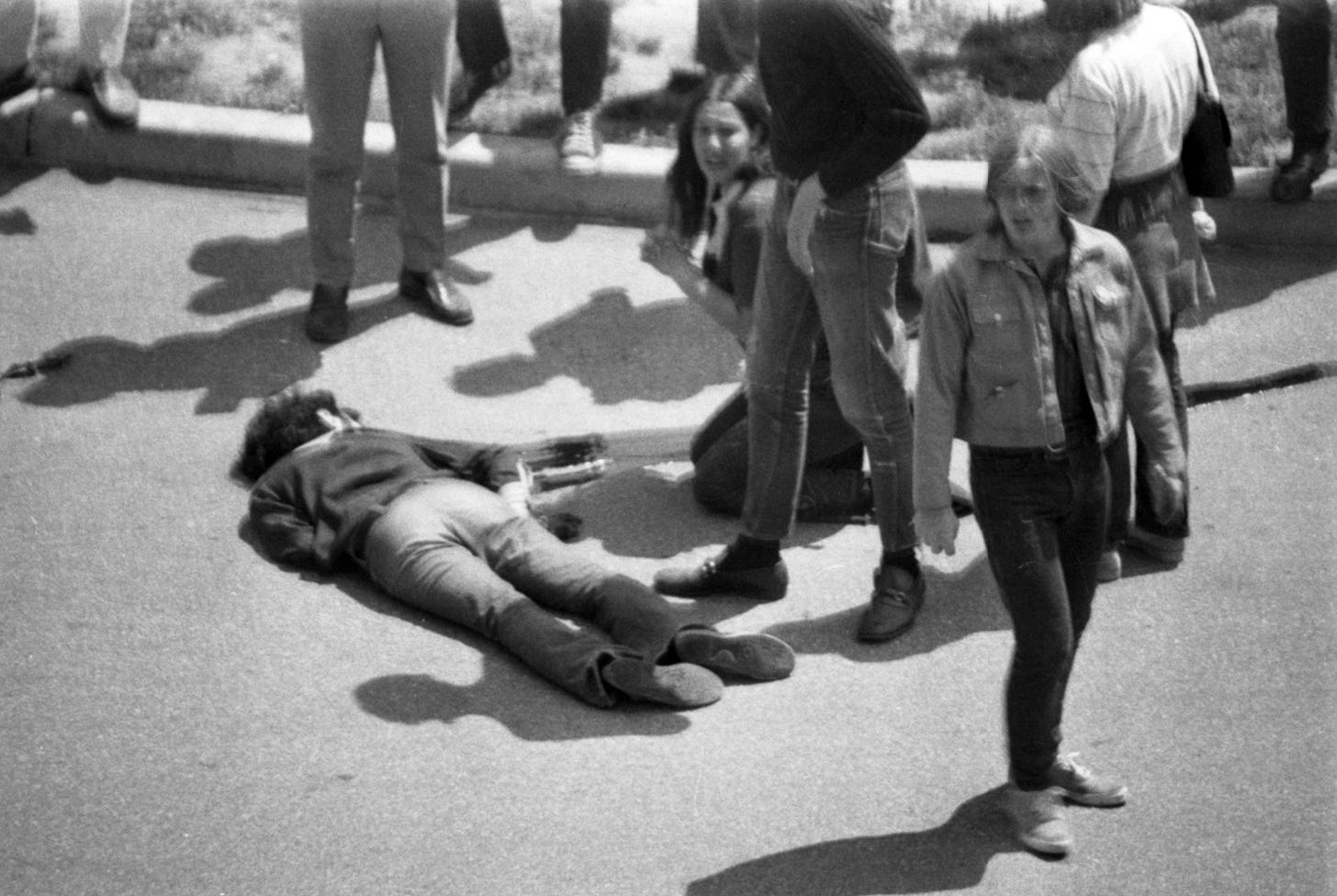
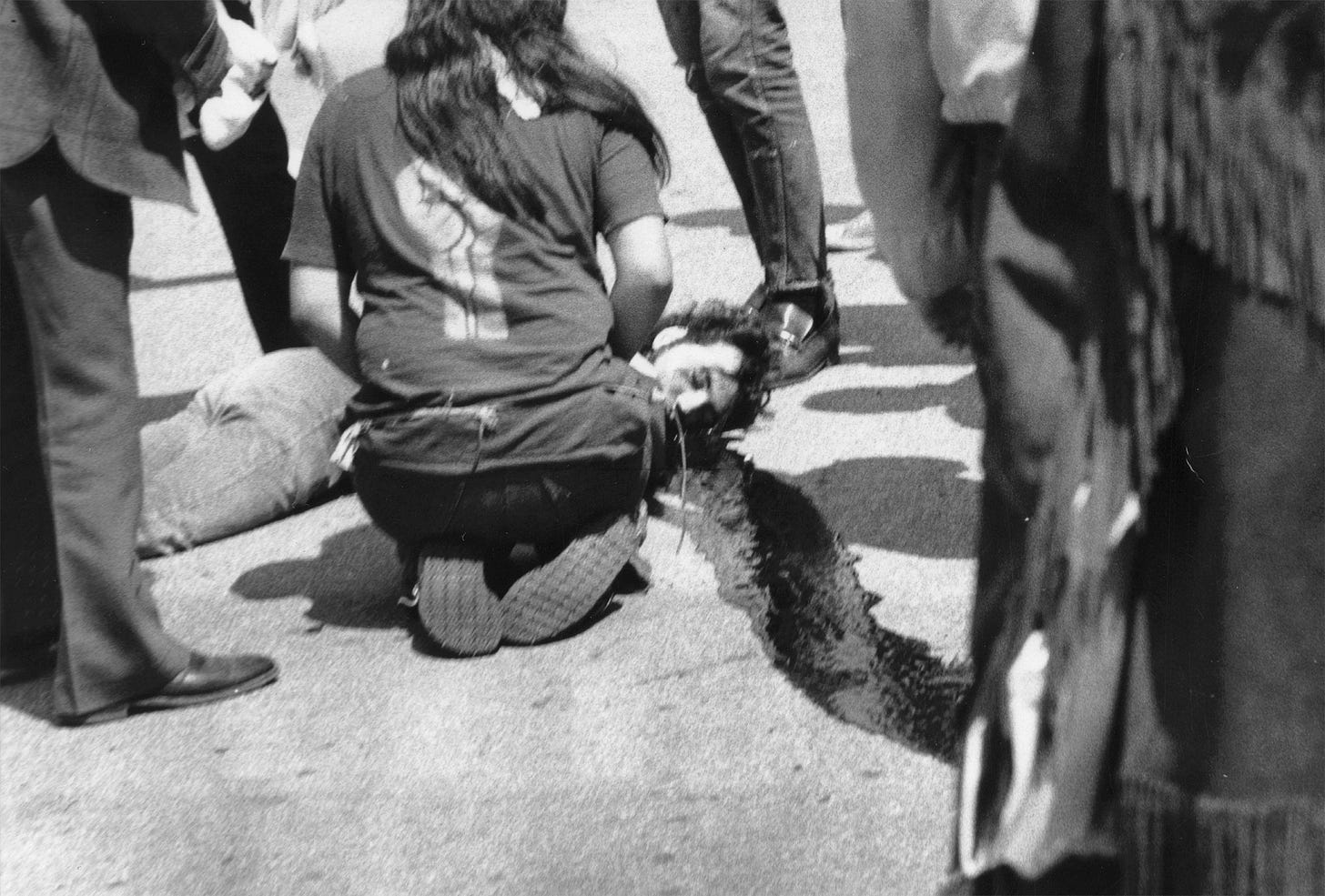

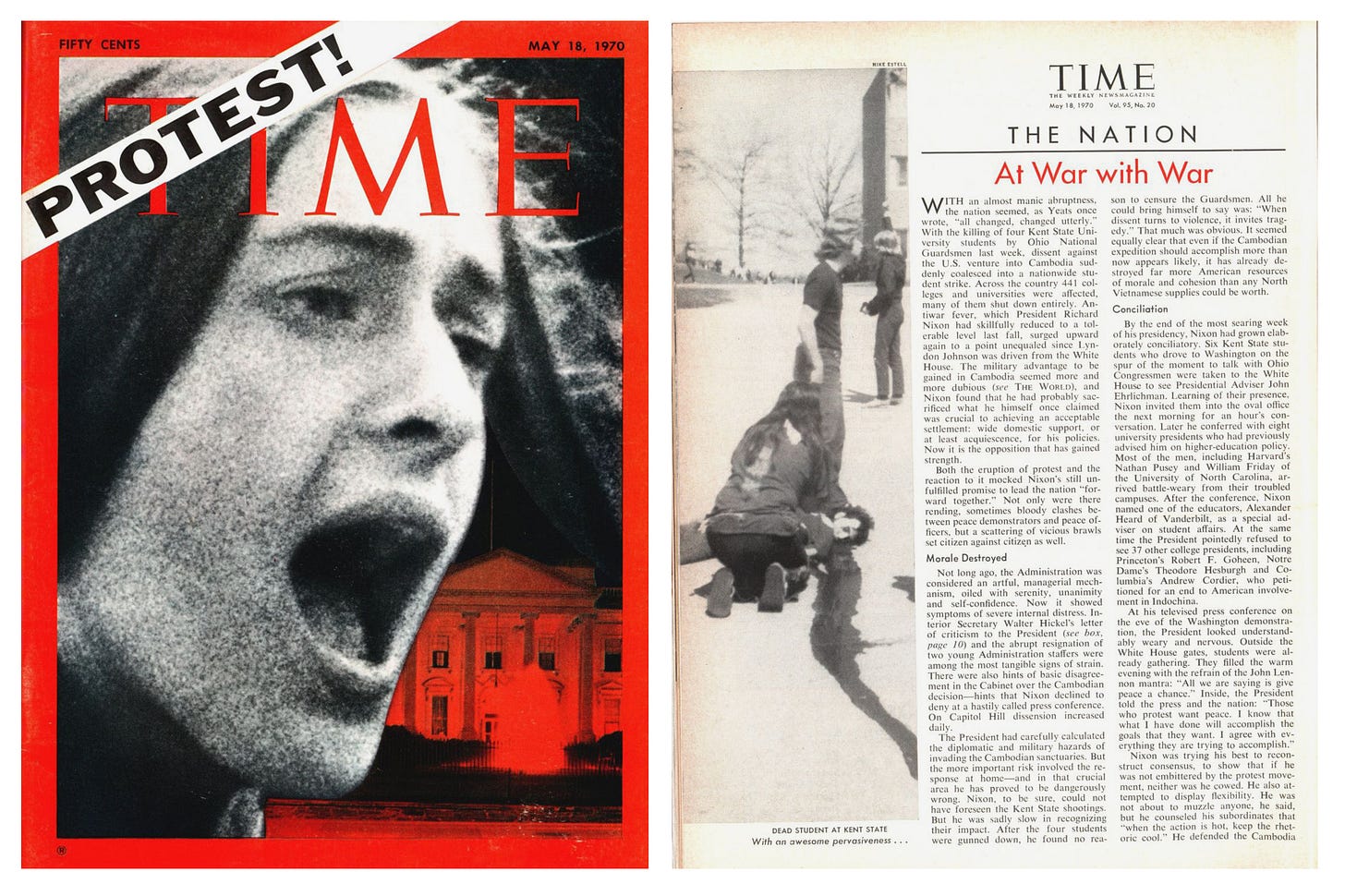
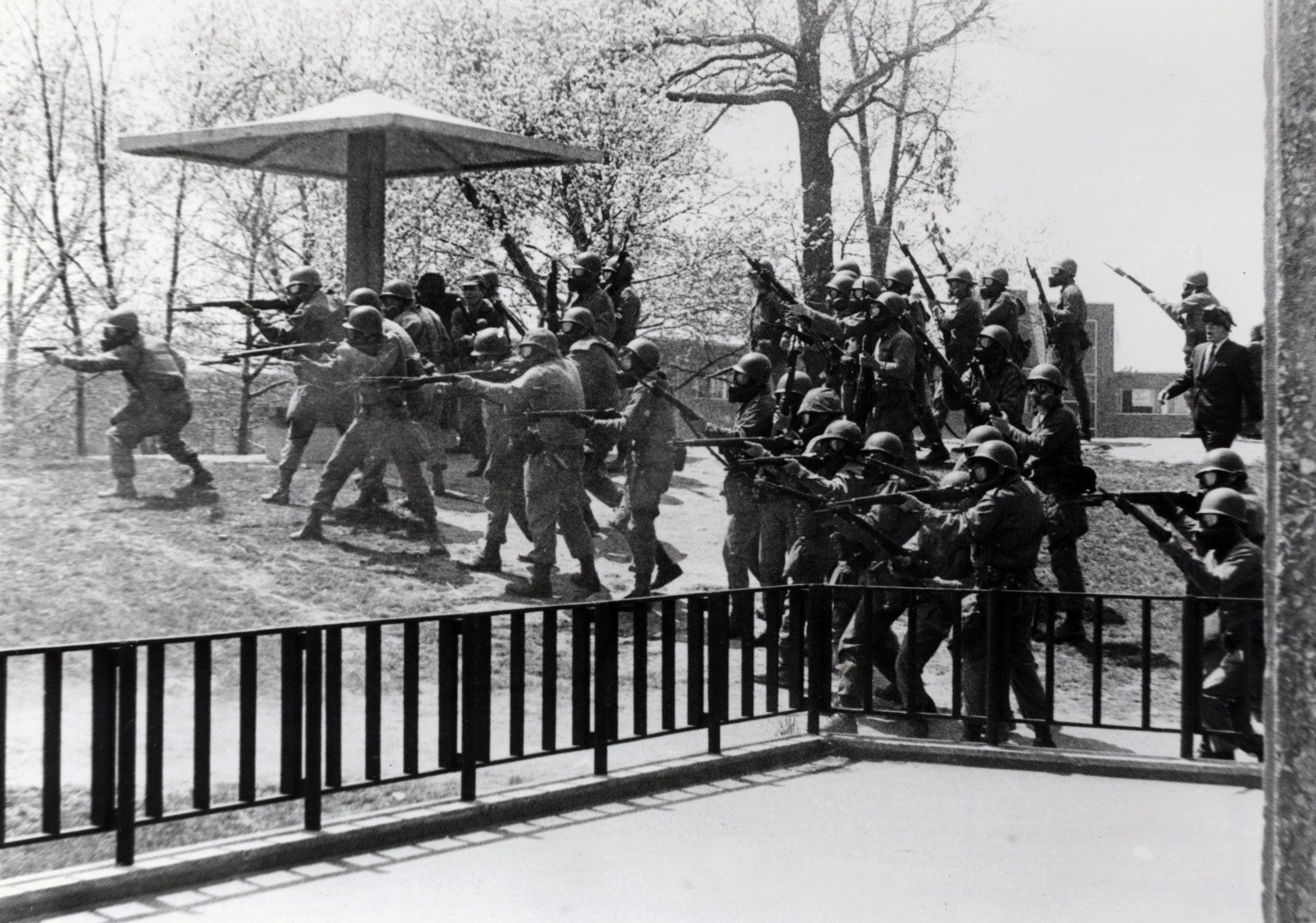
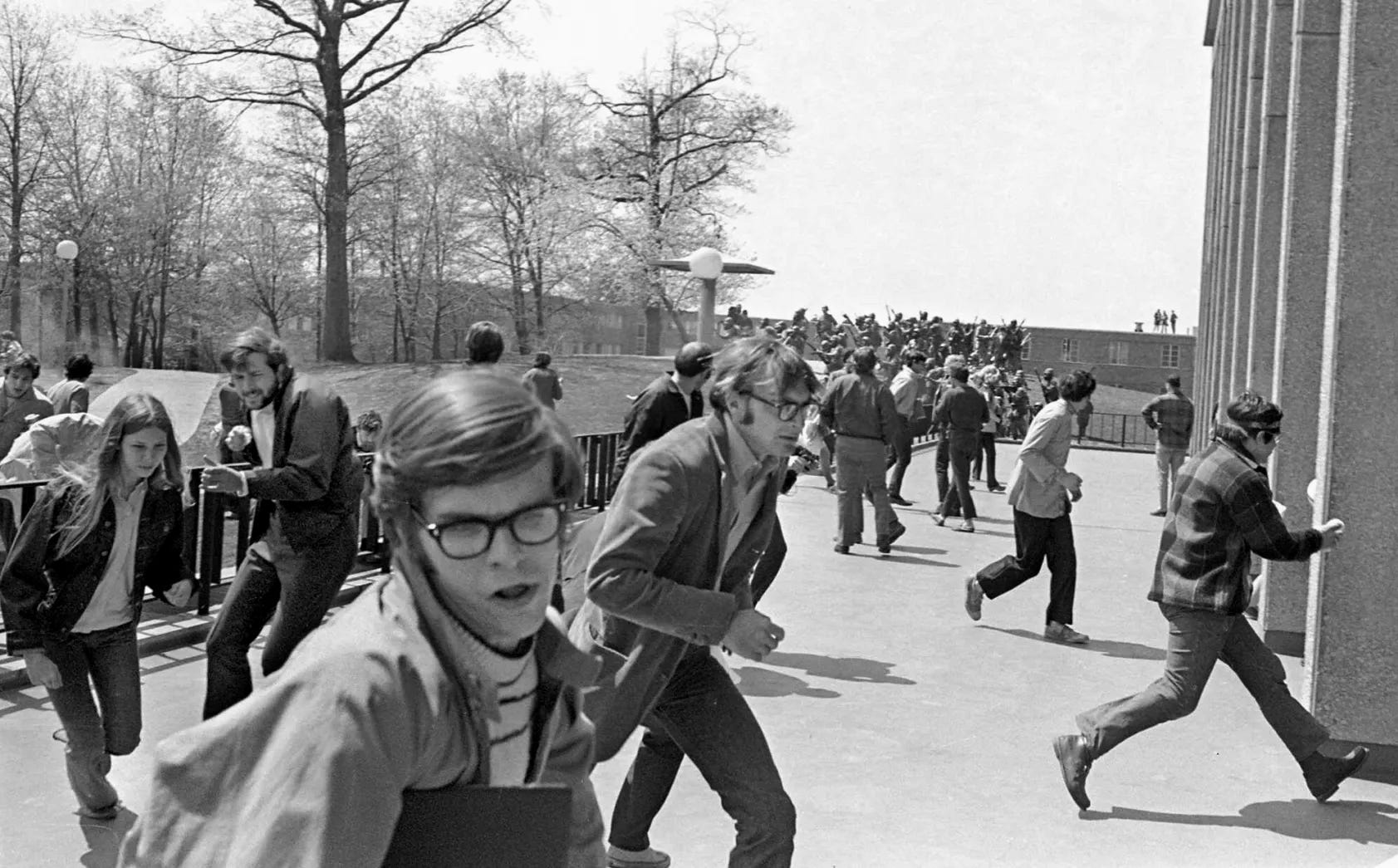
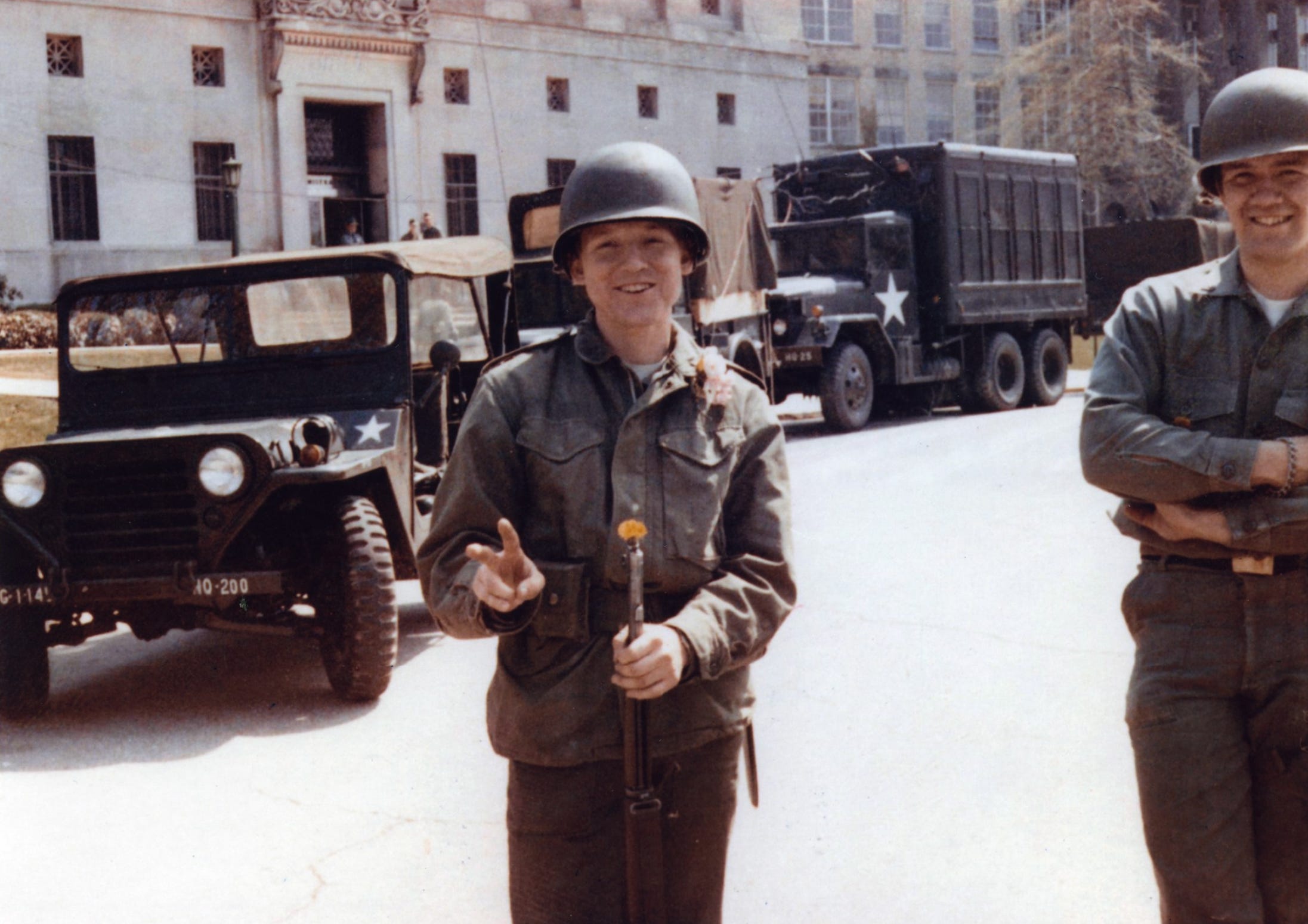
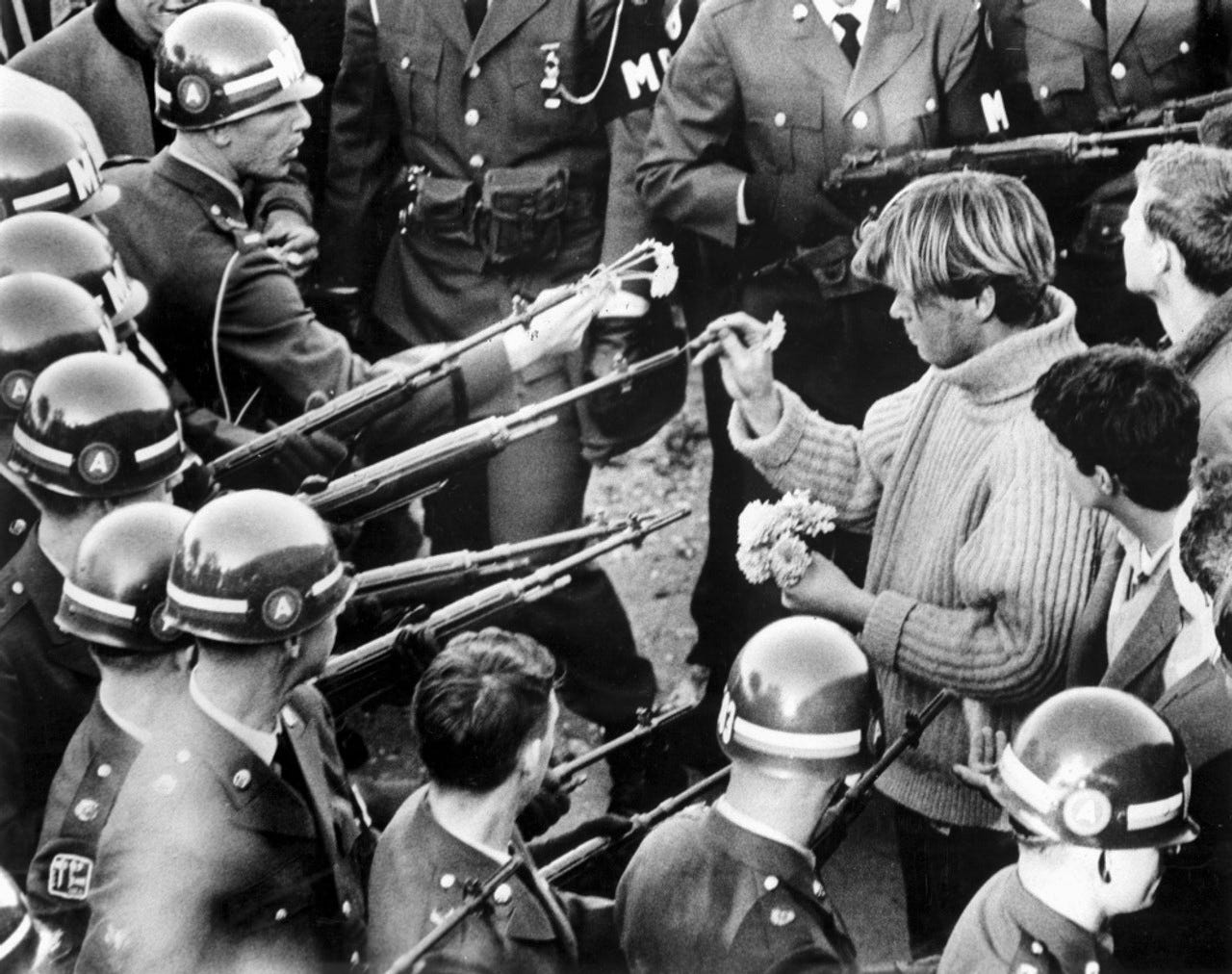
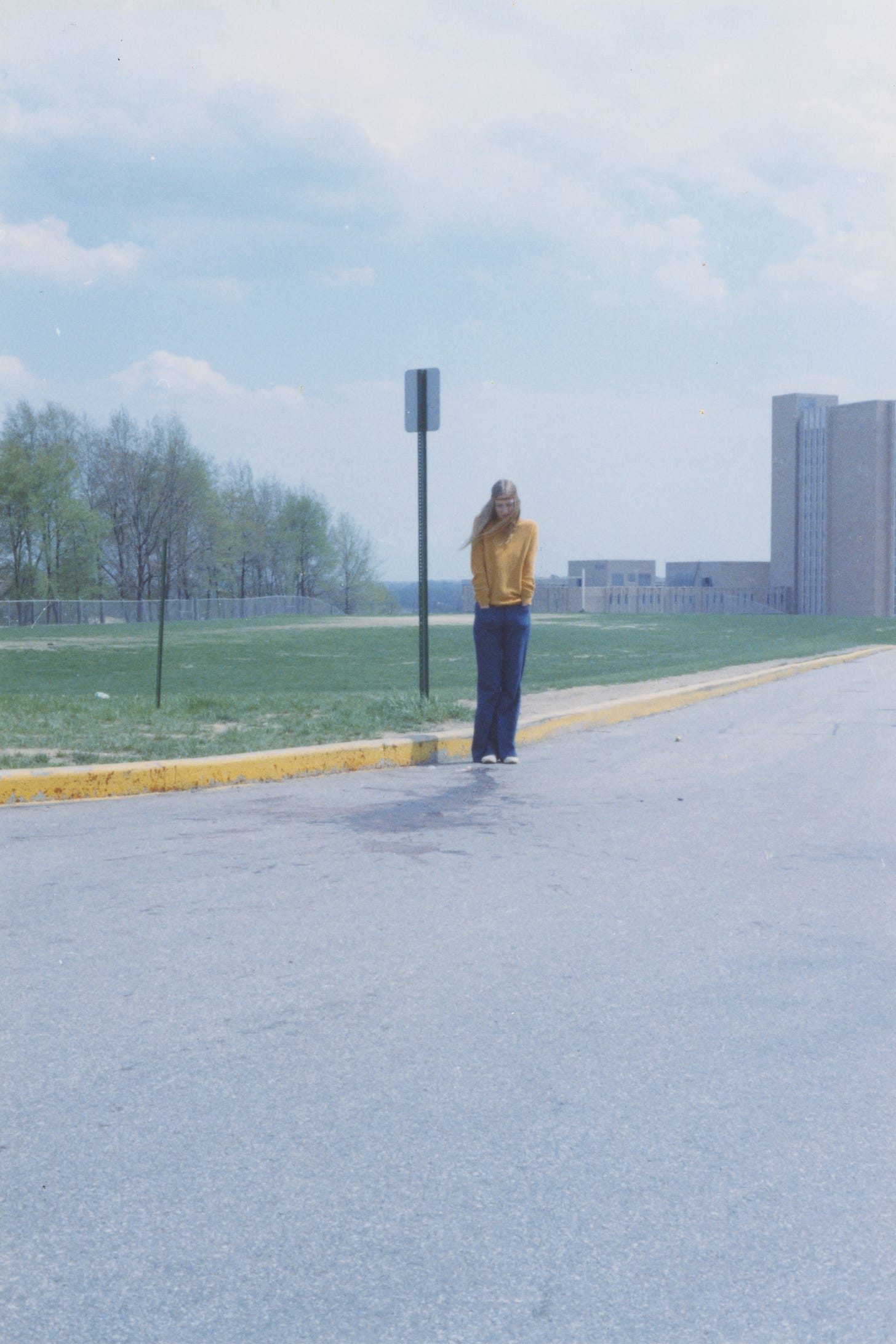

the slide on the pistol on Darnell's picture, fully back, shows he most probably pulled the trigger at the exact moment that gun fired. right on cue, to say the least...
This is important. Thank you for this.